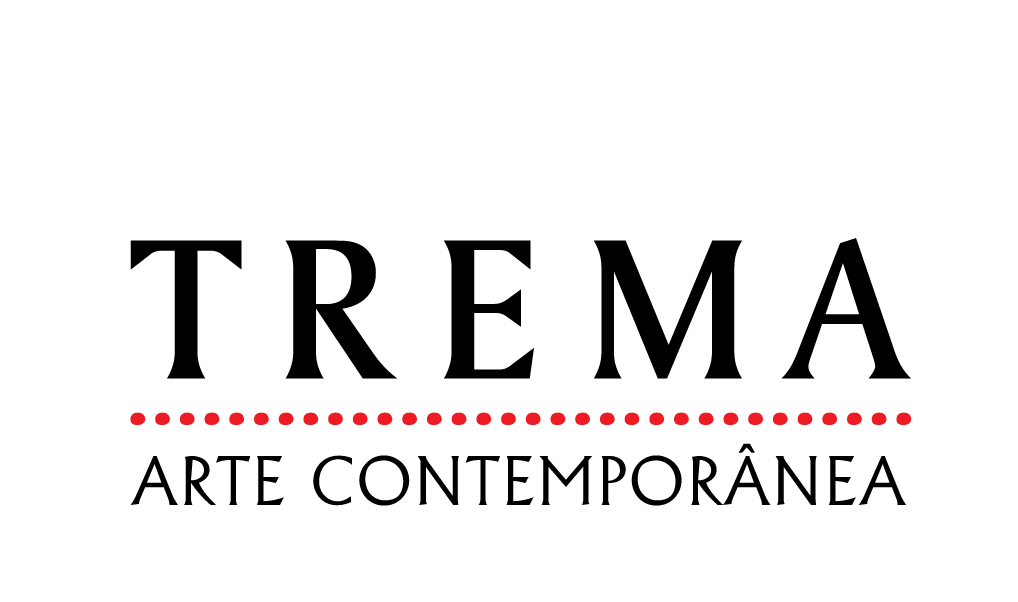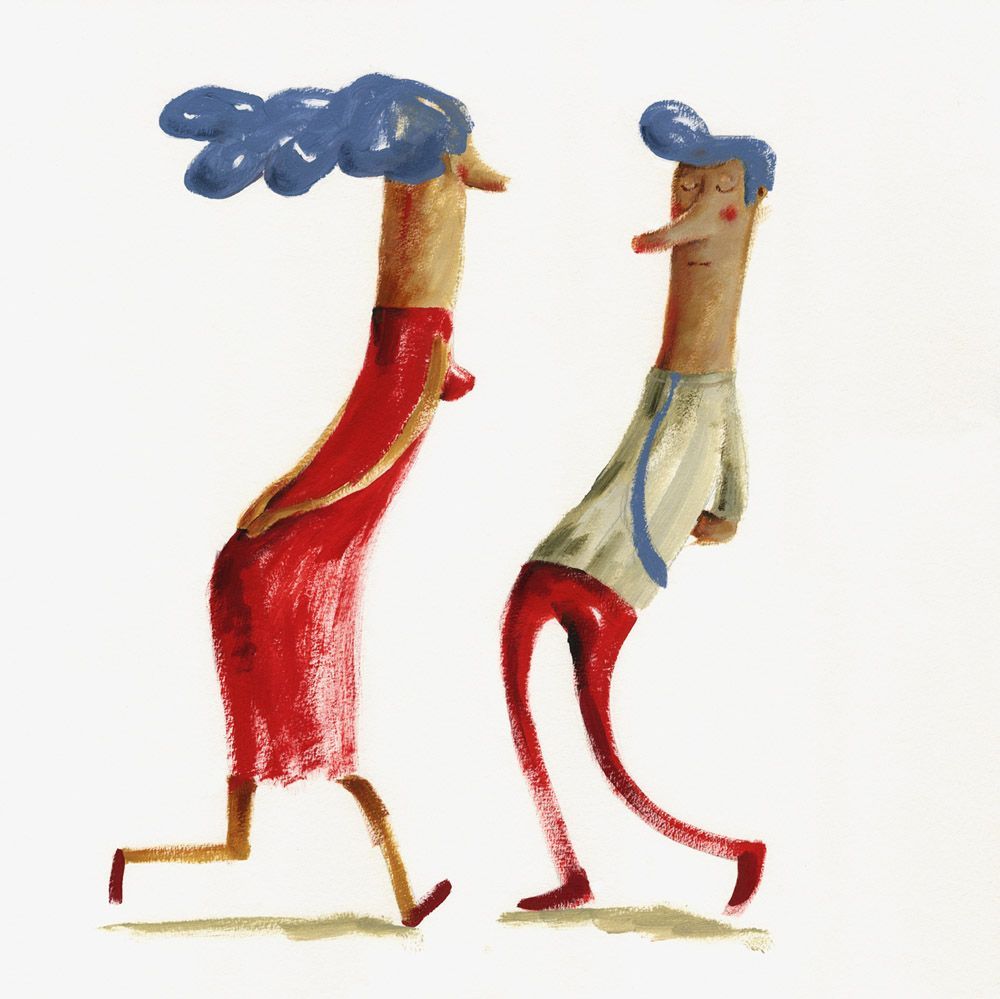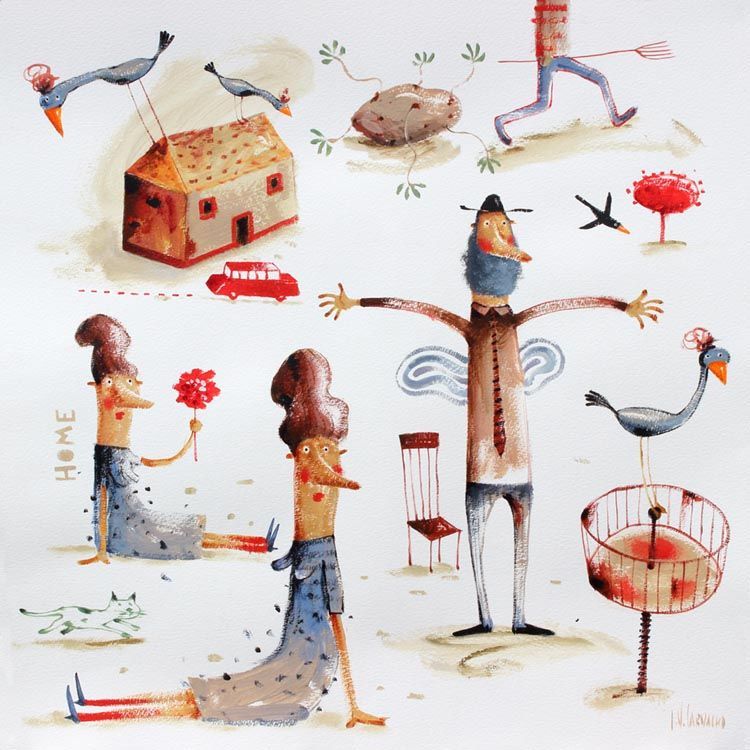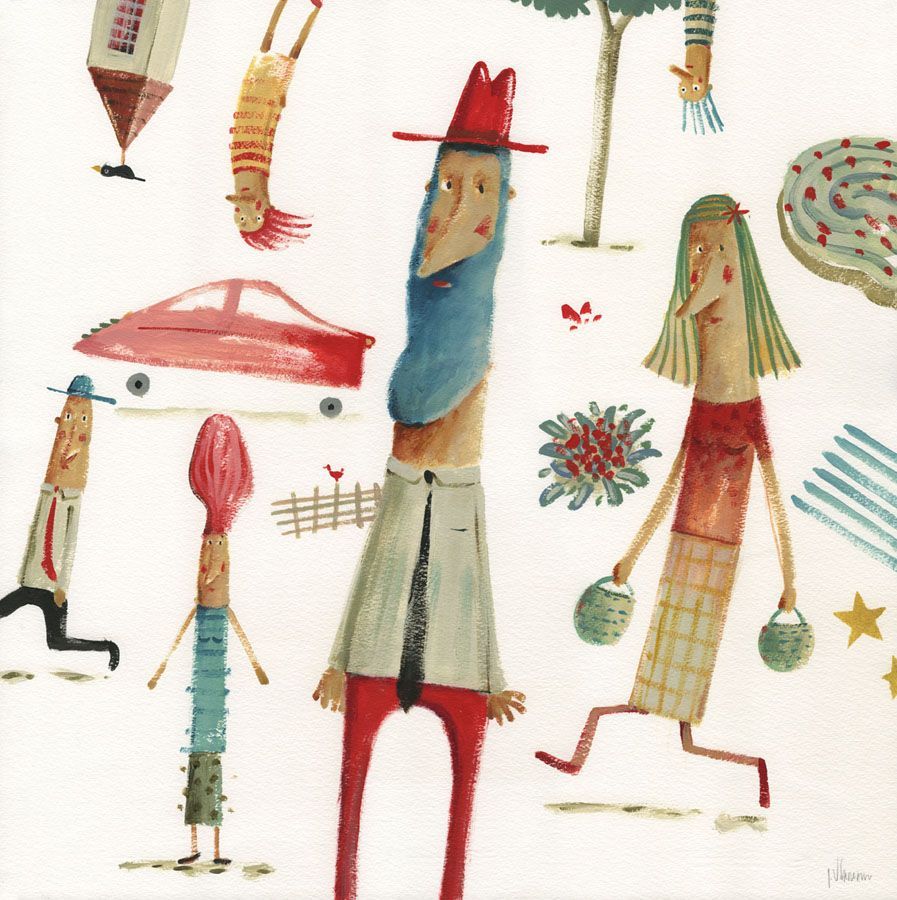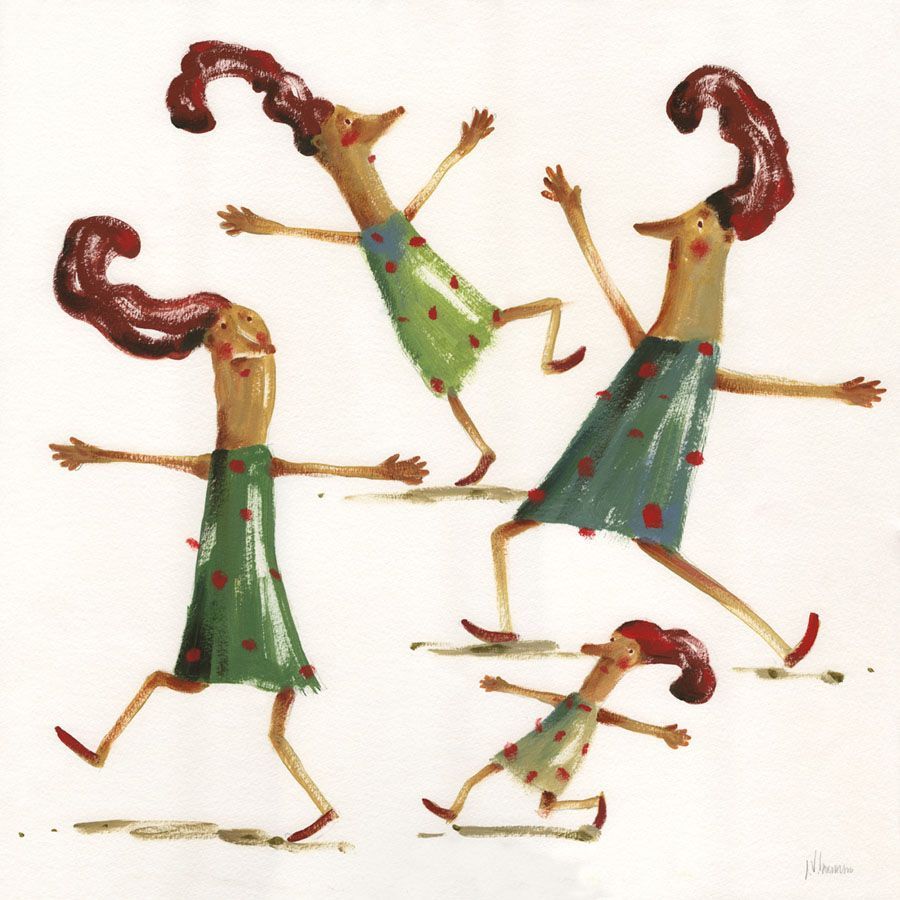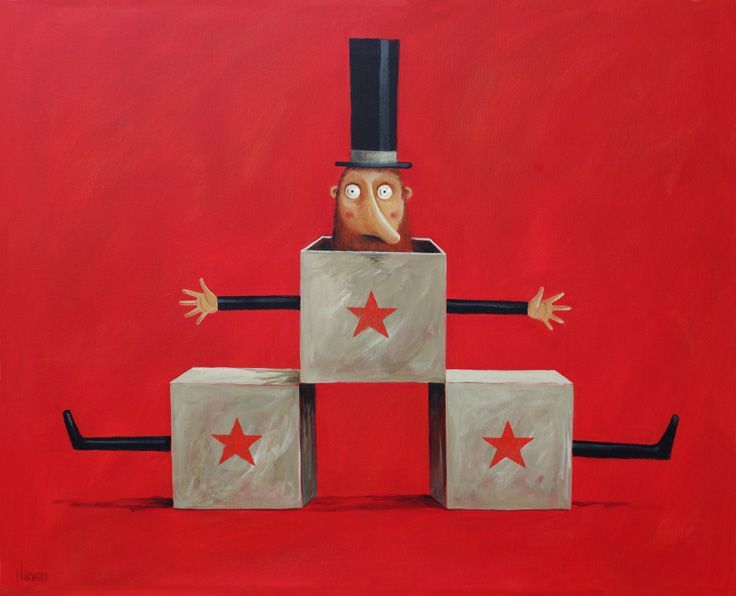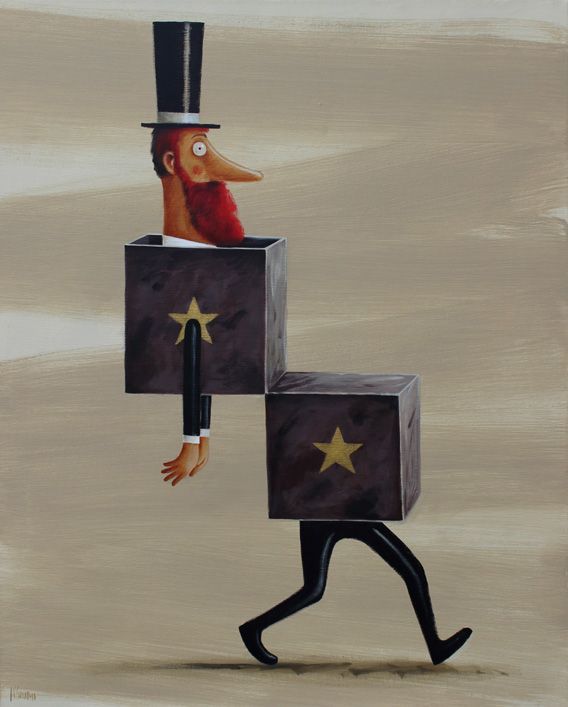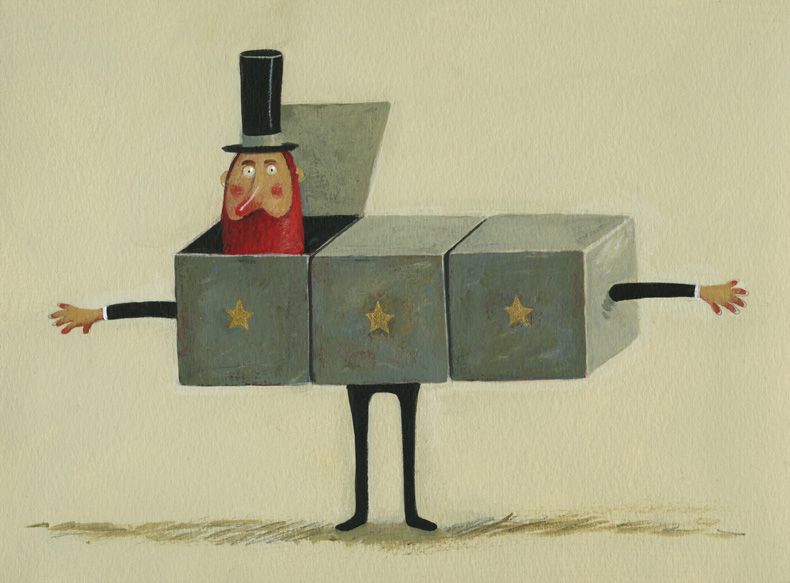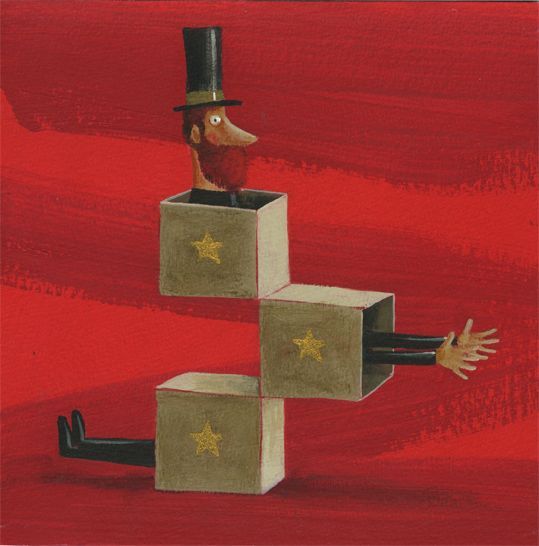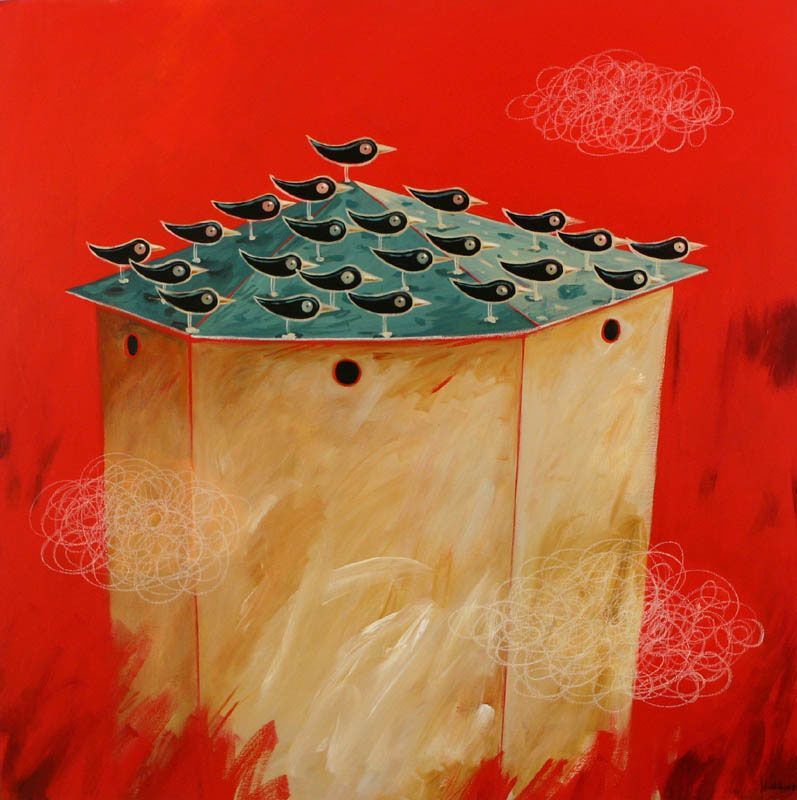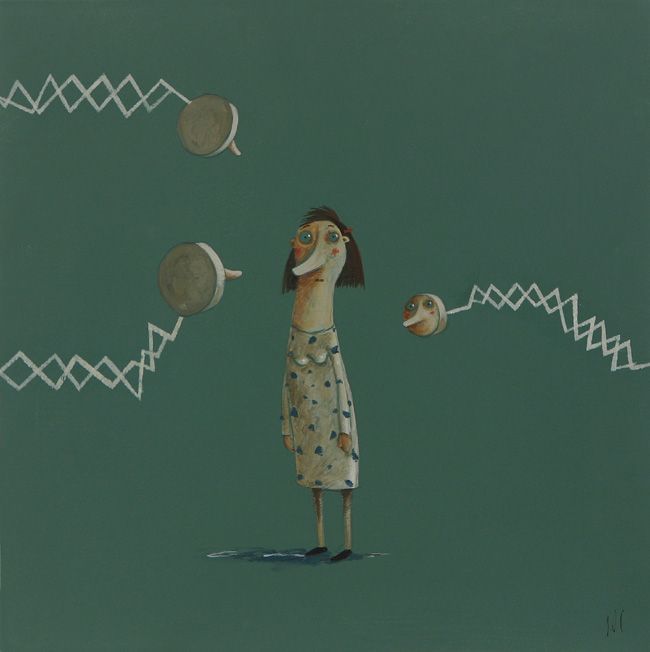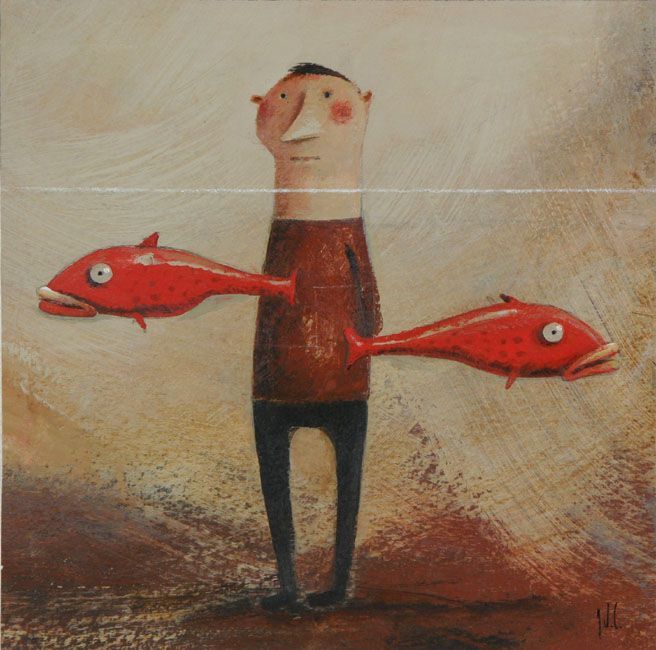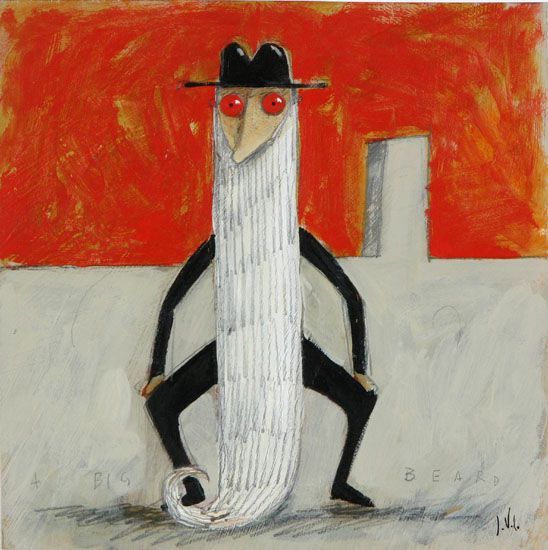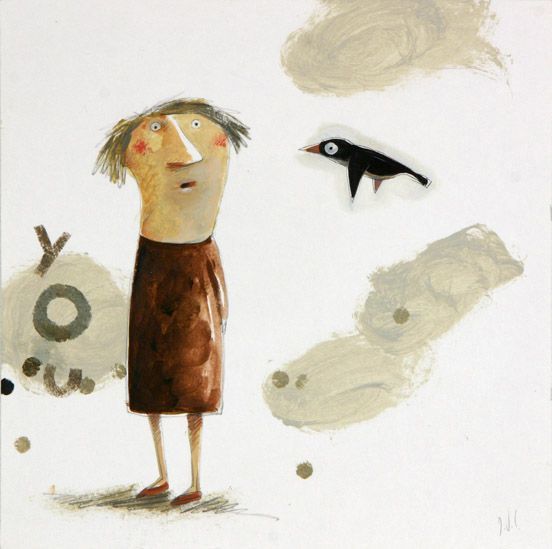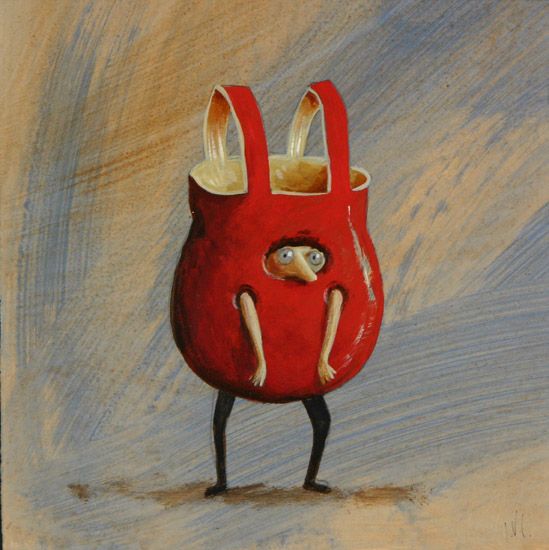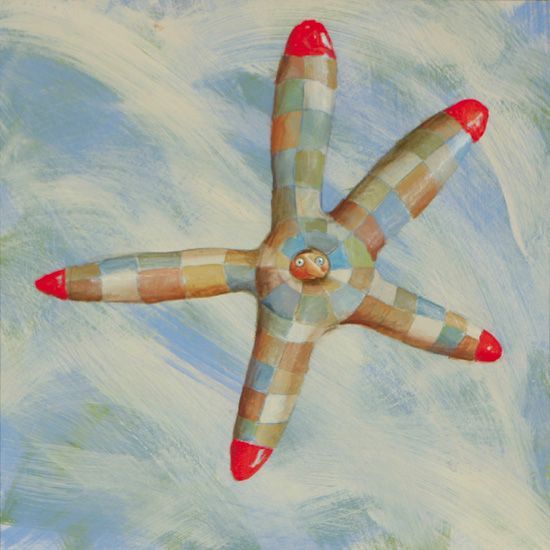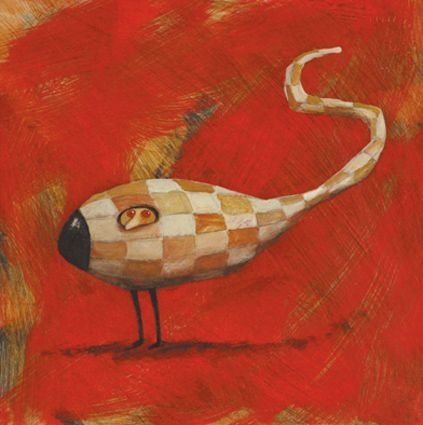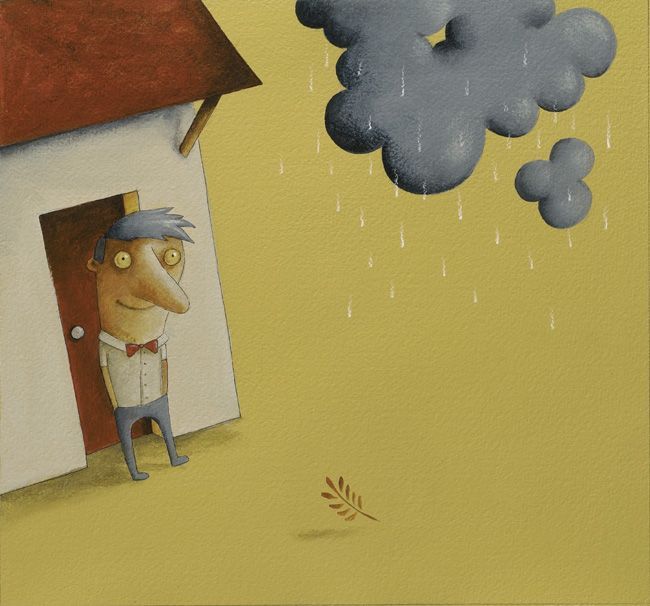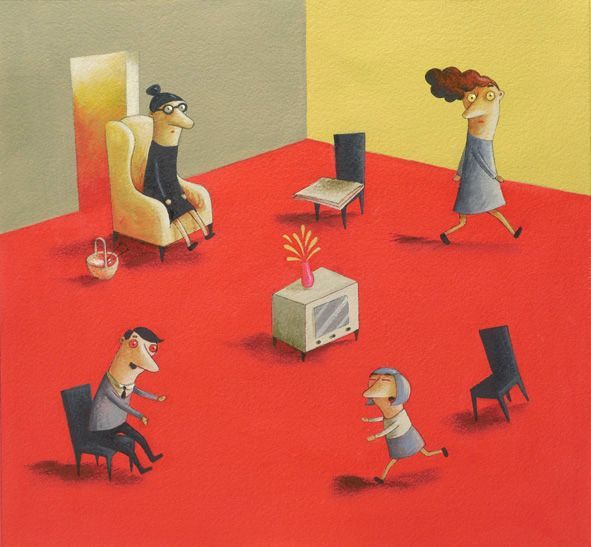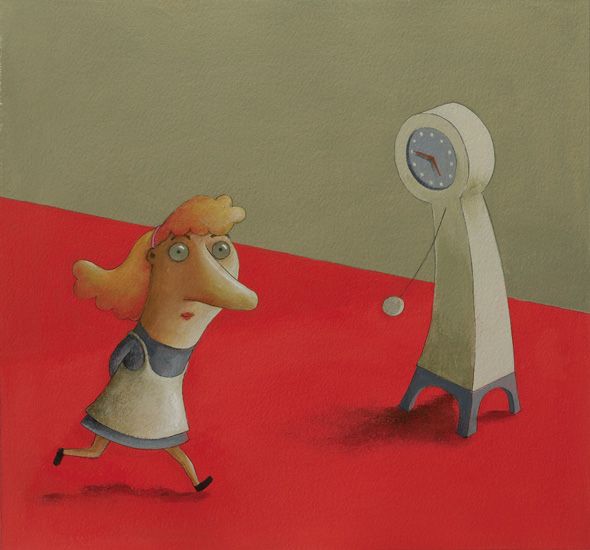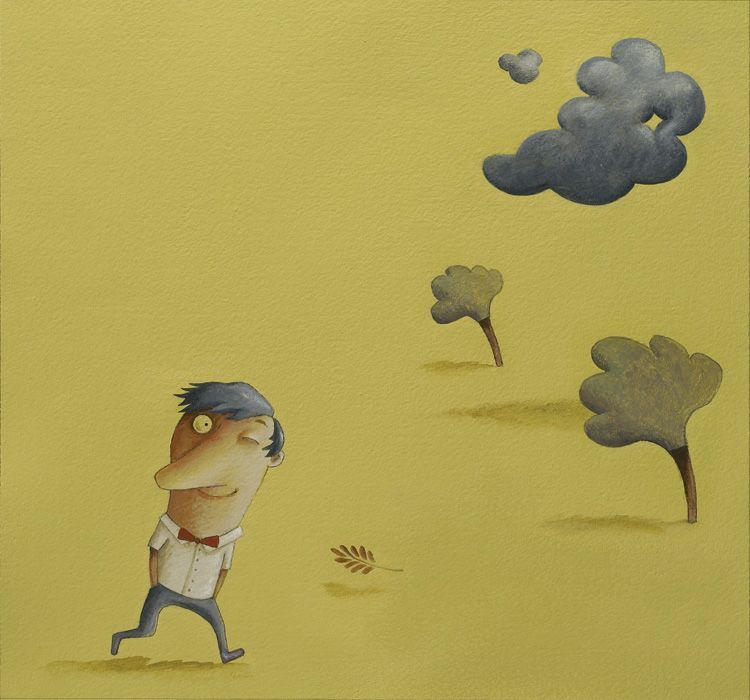João Vaz de Carvalho, Fundão, Portugal, 1958
No início dos anos 80 trabalhou na oficina de Mestre Vasco Berardo, em Coimbra. Mais tarde, já em Lisboa, dedicou-se em exclusivo, primeiro à pintura e depois também à ilustração.
O mundo segundo João Vaz de Carvalho
O mais fascinante dos mundos paralelos (que nunca se encontram com o nosso, a não ser no infinito) é a ténue possibilidade de existirem. E contudo, as únicas provas que temos da sua existência são aquelas que nos são trazidas pelos raros que descobriram as raras passagens de lá para cá.
O João Vaz de Carvalho pertence a esse grupo. Há muito que visita periodicamente um desses mundos paralelos. O seu. Há muito que nos traz notícias e visões desse mundo. E há muito que nos habituámos a seguir essas notícias. Esperamo-las ansiosamente. Tornaram-se uma necessidade.
São visões que parecem querer contar-nos histórias. E essa é uma das suas forças.
São histórias das quais não se conhece o enredo. Pressente-se. Cabe-nos a nós acabar de as contar e não conseguimos deixar de o fazer. As imagens impelem-nos a isso. Cativam-nos, seduzem-nos, intrigam-nos. Quem são estes personagens? O que andam a fazer? O seu olhar de espanto mostra que foram apanhados de surpresa, o que só contribui para adensar ainda mais a nossa curiosidade de voyeurs. Estabelecem de imediato uma relação de cumplicidade com o espectador. Reconhecemo-nos neles apesar de inverosímeis. Identificamo-nos com as situações apesar de improváveis. É uma linguagem de afetos.
Segue-se o rigor do discurso visual. Uma linguagem cuidada, elaborada, que contribui para legitimar o conteúdo. Tudo parece estar no seu lugar. Tudo parece ter sido pensado ao mais ínfimo pormenor. Nada foi deixado ao acaso. Portanto, tem que ser real. Os utensílios são credíveis, por mais surreal que seja a utilização. Não duvidamos por um instante que os mecanismos funcionam na perfeição, os relógios, os veículos, as ferramentas. Os personagens, apanhados em flagrante, sabem bem de onde vêm e para onde vão.
E por fim o humor. Quase indefinível, percebe-se que esteve presente desde a génese, que está inscrito na matriz do próprio trabalho. Que foi estruturante.
Damos connosco a sorrir! (Ju Godinho e Eduardo Filipe, abril de 2008)
In the early 1980s he worked in the workshop of Master Vasco Berardo, in Coimbra. Later, already in Lisbon, he dedicated himself exclusively, first to painting and then also to illustration
The world according to João Vaz Carvalho
The most fascinating thing about parallel worlds (that never meet ours, except in infinity), is the tenuous possibility that they do exist. However, the only proof that we have of their existence, are those that are brought by the few that have discovered the rare passages between here and there.
João Vaz Carvalho belongs to that group. He has long been a visitor to one of those parallel worlds; his own. For a long time he has been bringing us news and visions from that world and we have become used to following that news. We wait for it anxiously. It has become a necessity.
They are visions that seem to want to tell us stories. That is one of his strengths. They are stories of which we do not know the plot, we feel it. It is up to us to finish telling the stories and it is impossible not to do it, the images implore us to do so. They captivate us, seduce us and intrigue us. Who are these characters? What are they doing? Their astonished looks show that they have been taken by surprise, which only serves to increase our curiosity as voyers even more. They establish a relationship of complicity with the spectator. We see ourselves in them although this is unlikely. We can identity with the situations although they seem improbable. It is a language of affections.
It follows the rigorous of visual discourse, a careful, elaborate language which serves to legitimise the content. Everything seems to be in its place. Everything seems to be thought out to the last detail. Nothing has been left to chance. So, it must be real. The utensils are credible, despite the most surreal uses of some of them. We do not doubt for an instant that the mechanisms work perfectly, the clocks, the vehicles, the tools. The characters, caught red-handed, know very well where they have been and where they are going.
And finally, there is the humour. Almost indefinable, we can see that it has been present from the start, that it is written in the matrix of the work. That it defines the structure.
We catch ourselves laughing! (Ju Godinho and Eduardo Filipe April 2008)
